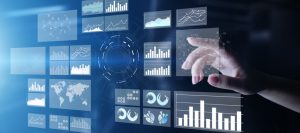Hello class,

Descriptive analytics tells users what is happening now and what happened in the past. On the other hand, predictive analytics tells users what is going to happen in the future.
Business intelligence (BI) is the process of using software and services to learn and predict the future trends and new ideas. BI improves the strategic and tactical decision-making process in an organization. Moreover, it helps finding current report that shine the light on organization’s current condition. There are many benefits of using BI. First, BI enables organizations to make data-driven business decisions. second, BI saves time and increasing efficiency by providing faster analysis. Third, BI improves customers’ experience which leads to higher employee satisfaction. Finally, BI improves organizational competitive advantage overall which in return earn them more profits.
Online Transactional Processing (OLTP) are used to process any financial transaction online or in-person such in eBay or local Walmart. Online Analytical Processing (OLAP) uses data from these financial transactions and analyze it.
Supply chain management is the process of managing the flow of raw materials or data that make up the final product. This process is sometimes fragile and very sensitive. If an organization made lots of products it is in risk of losing money. On the other hand, if fewer products are made it can end up with angry customers and loss of business.
(Image source: Adobe stock)
Hey Amgad, I thought your post was super informative! You touched on a few important point but for me what stuck out was how you discussed BI. Thank you so much from listing out the advantages to BI because these points are very important for businesses to understand and implement!